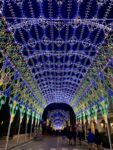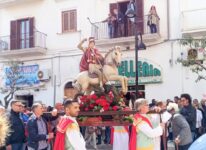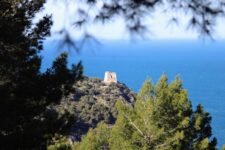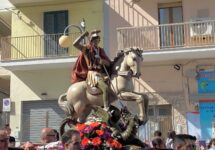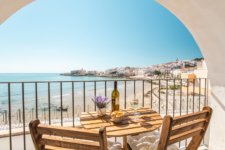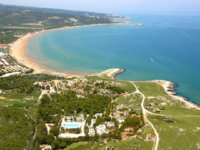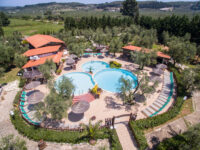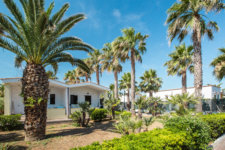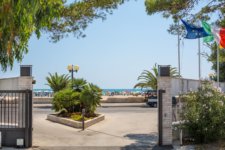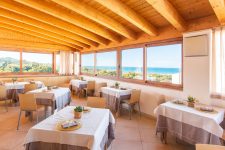The Cathedral (Basilica) of Vieste is located in the upper area of the medieval village more precisely a few steps from the Swabian castle, its construction dates back to the second half of the XNUMXth century, the building still retains the primitive Apulian-Romanesque style as a whole in the bell tower that of the late Baroque.
It represents one of the oldest churches in Romanesque style in Puglia and is found in perfect harmony with the bell tower of the church rebuilt in Baroque style after a collapse in 1772.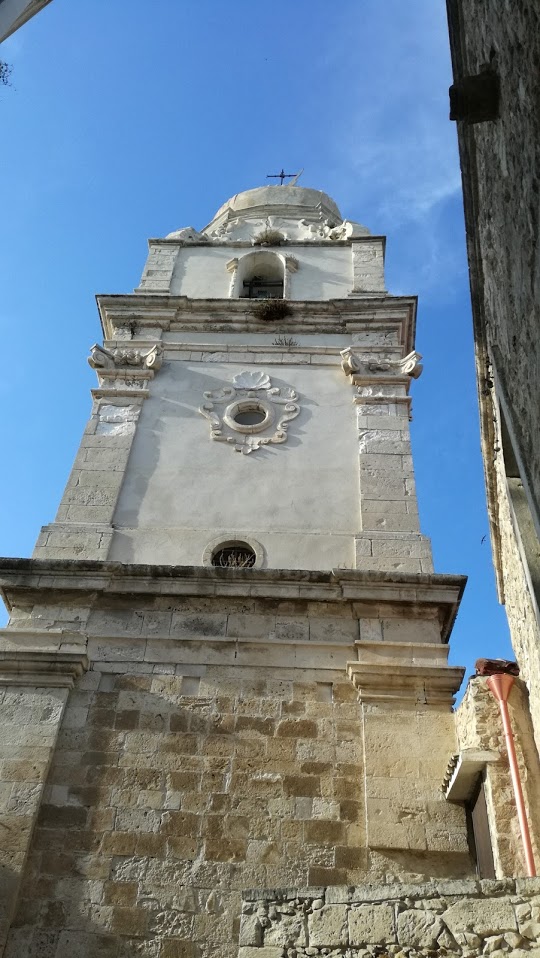
Following repeated nefarious events, such as the looting carried out by the Saracens in 1480 and 1554 and the devastating earthquake of May 1646 which struck the city of Vieste undeterred, the cathedral has undergone modifications over the years which have altered its original appearance. Outside the cathedral you can see the imposing late Baroque bell tower while if you look inside you can perfectly see the Romanesque basilica plan, the internal area in turn is divided into three naves divided by two rows of six columns with Corinthian and cubic capitals.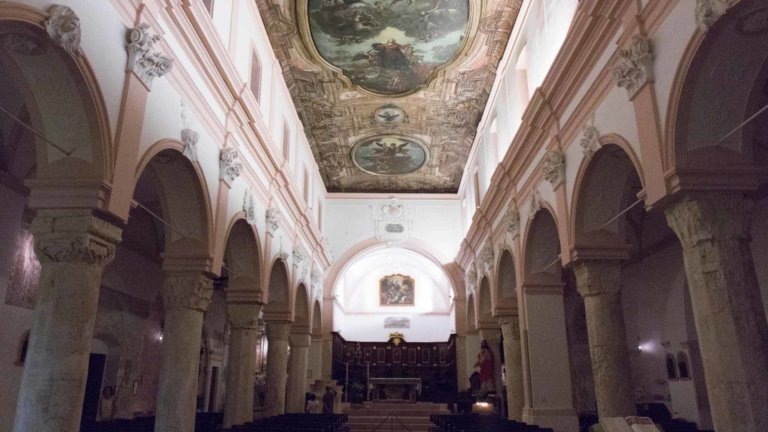
The capitals show particular ornamental elements of rudimentary engraving which take up the themes concerning the animal and natural world such as roosters, birds, horses, dragons and leaves of various kinds among which those of palm and acanthus stand out. its ancient and primitive origins in the central structure that makes up the northern facade and where the side entrance is located; while over the years the structure of the cathedral has given way to the features of the past to make room for the improvements that have gradually been made, it can be seen from the fact that the apses, which were semi-circular in the beginning, have given way to the choir and to two chapels. The wooden ceiling, on the other hand, has taken the place of the trusses belonging to the central nave, this ceiling is in the Neapolitan Baroque style painted in tempera where three large canvases are placed representing the Madonna Assunta, owner of the church, San Giorgio, protector of the city and San Michael the Archangel, protector of the Gargano.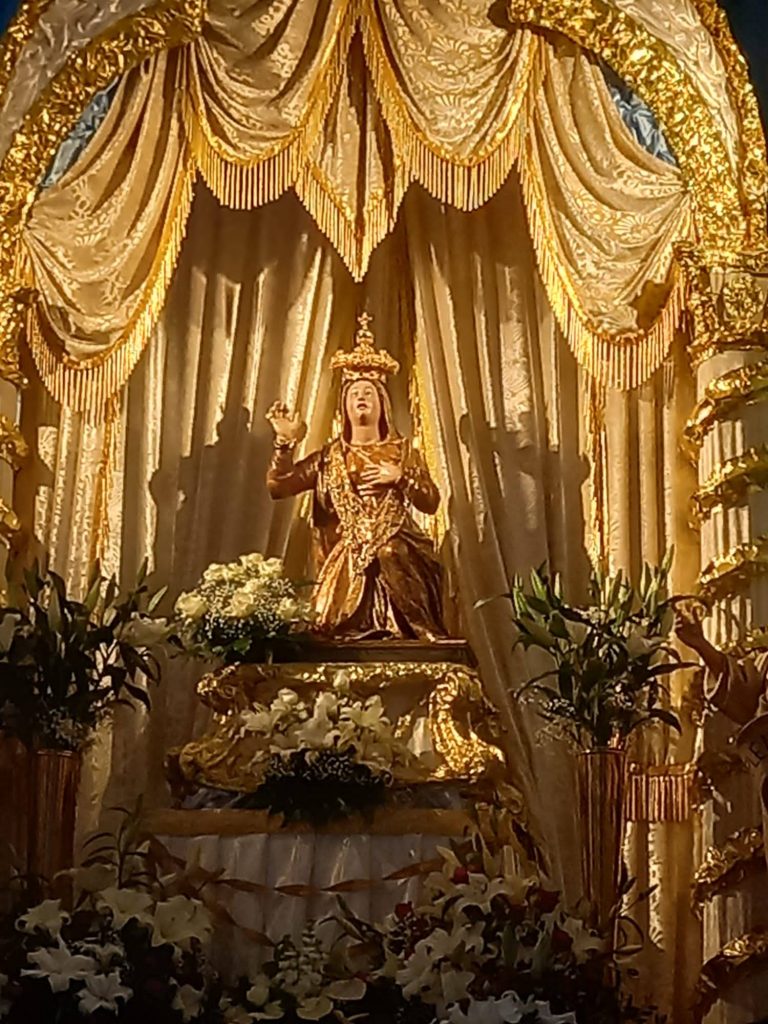
The church houses the statue of the Madonna di Santa Maria di Merino (precious 1581th century wooden sculpture) which tradition says was found by some sailors on the beach of Vieste. Other important works present in the church are: the altarpiece of the rosary by the Genoese Michele Manchelli from 2009; the eighteenth-century canvases of the SS. Trinity by Giuseppe Tomaiuolo from Vieste and the Madonna with child and saints of the Venetian school; the Dead Christ, a marble high relief from the Michelangelo school and the valuable wooden statue of Santa Maria di Merino, protector of Vieste, from an uncertain period and skilfully restored in XNUMX in Bari by the Superintendency of Artistic Heritage.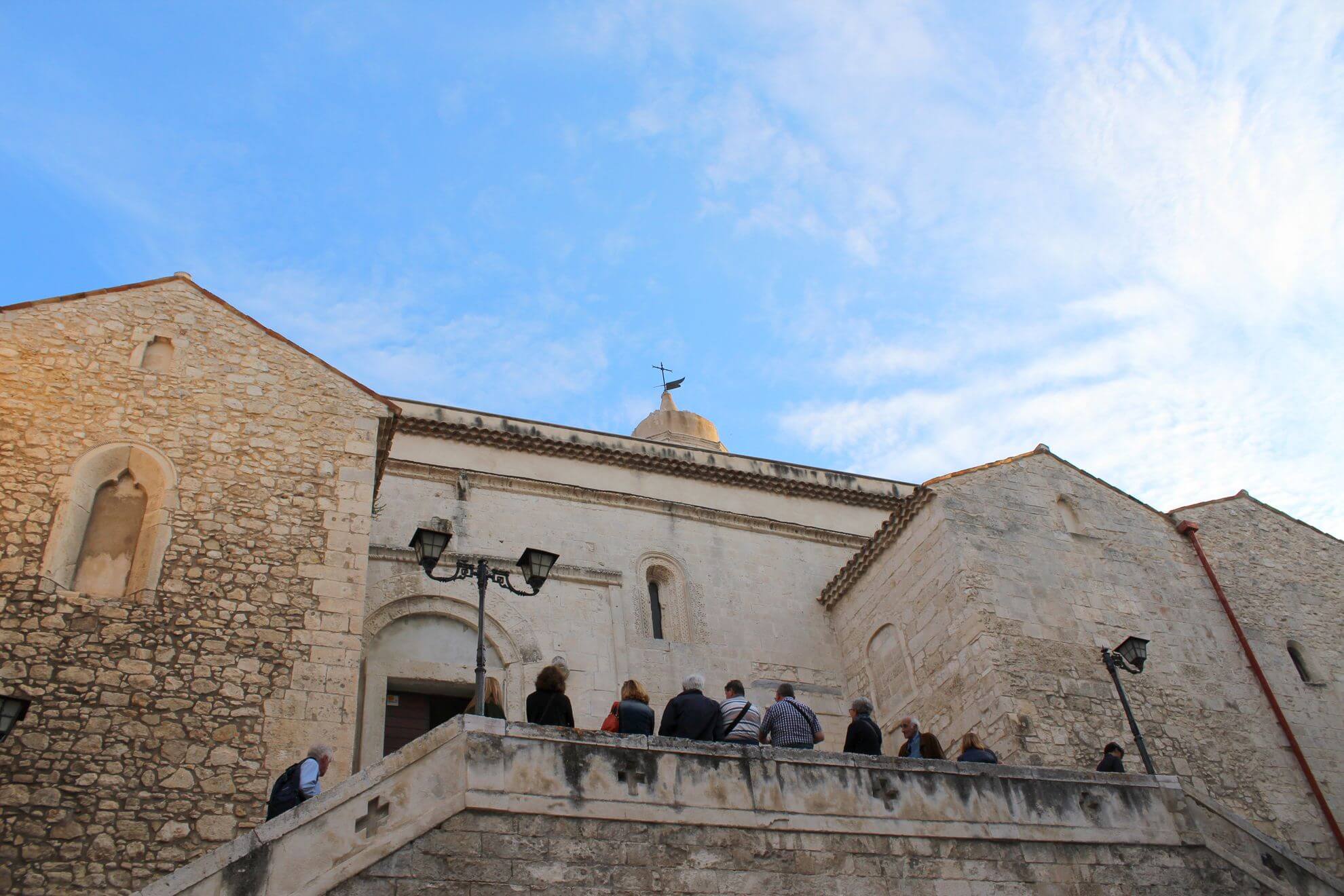
The cathedral of Vieste in February 1981 was named by Pope John Paul II "Minor Basilica".
BIBLIOGRAPHY: GABRIEL TARDIO – ON THE ROADS OF THE ARCHANGEL MICHAEL – 2007 SEE ALSO:
THE ANCIENT VILLAGE| THE SWABIAN CASTLE | THE BITTER CHIANCA | SAN FRANCESCO POINT
It represents one of the oldest churches in Romanesque style in Puglia and is found in perfect harmony with the bell tower of the church rebuilt in Baroque style after a collapse in 1772.

Following repeated nefarious events, such as the looting carried out by the Saracens in 1480 and 1554 and the devastating earthquake of May 1646 which struck the city of Vieste undeterred, the cathedral has undergone modifications over the years which have altered its original appearance. Outside the cathedral you can see the imposing late Baroque bell tower while if you look inside you can perfectly see the Romanesque basilica plan, the internal area in turn is divided into three naves divided by two rows of six columns with Corinthian and cubic capitals.

The capitals show particular ornamental elements of rudimentary engraving which take up the themes concerning the animal and natural world such as roosters, birds, horses, dragons and leaves of various kinds among which those of palm and acanthus stand out. its ancient and primitive origins in the central structure that makes up the northern facade and where the side entrance is located; while over the years the structure of the cathedral has given way to the features of the past to make room for the improvements that have gradually been made, it can be seen from the fact that the apses, which were semi-circular in the beginning, have given way to the choir and to two chapels. The wooden ceiling, on the other hand, has taken the place of the trusses belonging to the central nave, this ceiling is in the Neapolitan Baroque style painted in tempera where three large canvases are placed representing the Madonna Assunta, owner of the church, San Giorgio, protector of the city and San Michael the Archangel, protector of the Gargano.

The church houses the statue of the Madonna di Santa Maria di Merino (precious 1581th century wooden sculpture) which tradition says was found by some sailors on the beach of Vieste. Other important works present in the church are: the altarpiece of the rosary by the Genoese Michele Manchelli from 2009; the eighteenth-century canvases of the SS. Trinity by Giuseppe Tomaiuolo from Vieste and the Madonna with child and saints of the Venetian school; the Dead Christ, a marble high relief from the Michelangelo school and the valuable wooden statue of Santa Maria di Merino, protector of Vieste, from an uncertain period and skilfully restored in XNUMX in Bari by the Superintendency of Artistic Heritage.

The cathedral of Vieste in February 1981 was named by Pope John Paul II "Minor Basilica".
BIBLIOGRAPHY: GABRIEL TARDIO – ON THE ROADS OF THE ARCHANGEL MICHAEL – 2007 SEE ALSO:
THE ANCIENT VILLAGE| THE SWABIAN CASTLE | THE BITTER CHIANCA | SAN FRANCESCO POINT

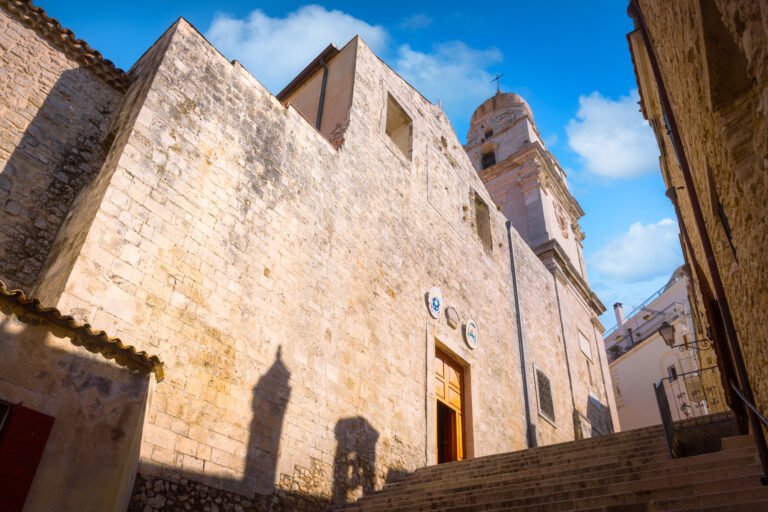
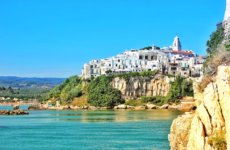

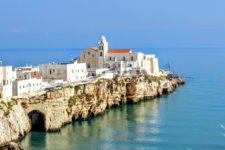

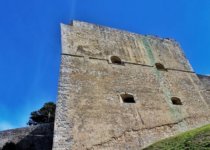





 Turismovieste.it is created by
Turismovieste.it is created by 